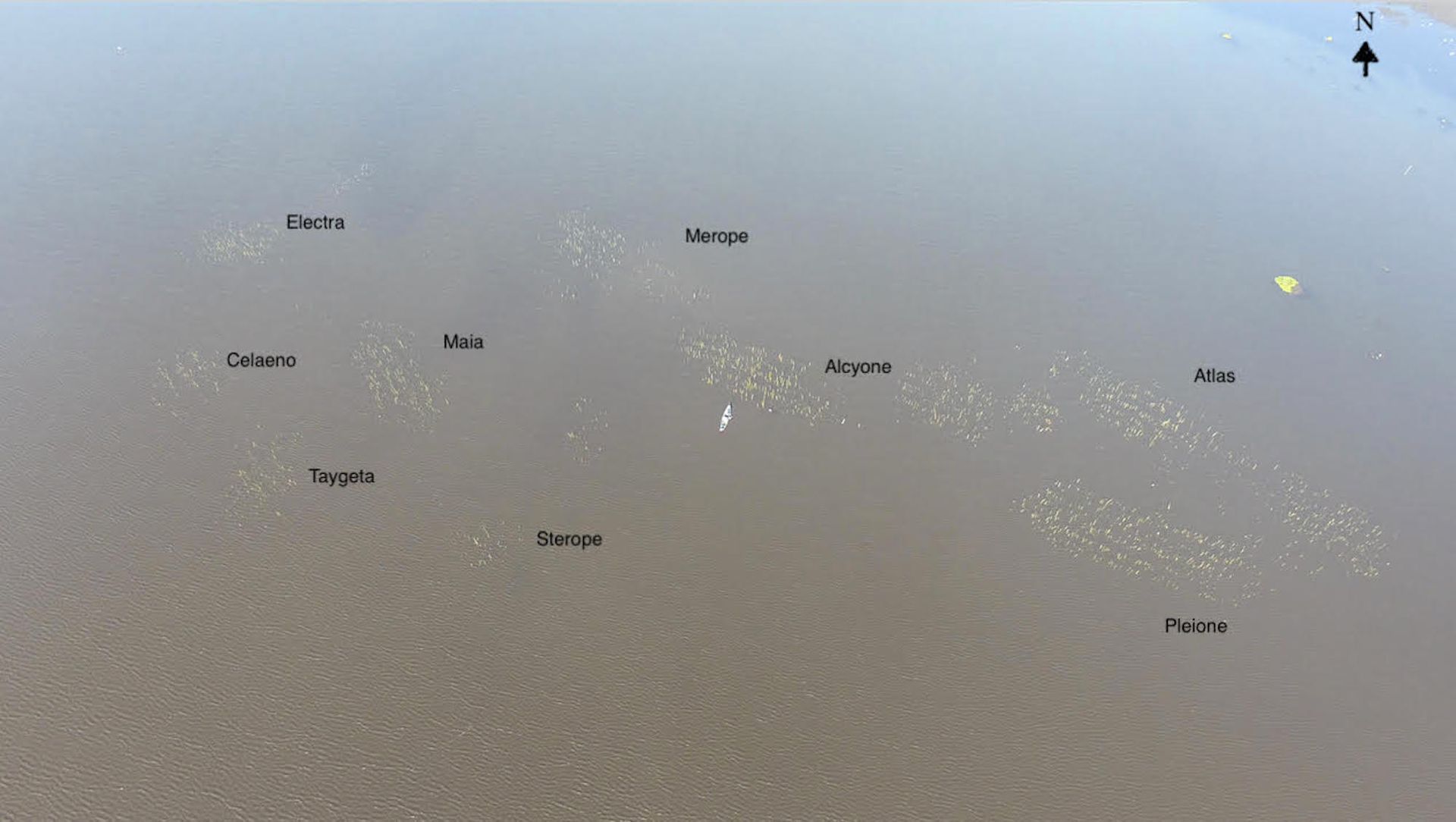An ancient village in Brazil may have been a ritual or ceremonial centre designed to resemble the Pleiades star cluster. Archaeologists made the discovery following a survey of pre-Hispanic stilt villages in the Maranhão estuaries of northeast Brazil. Among the villages studied, the site of Formoso stood out because of its unusual layout, ornate pottery, building size and length of use.
“It appears to us that the Formoso site may have been an elite ritual meeting site where sacred knowledge (like astronomy) was shared,” says archaeologist Christopher Davis of McHenry County College, in Illinois, who published the research with archaeologist Alexandre Guida Navarro of the Universidade Federal do Maranhão, Brazil, in the Journal of Archaeological Science: Reports.
During the investigation of Formoso, the team discovered uniquely ornate pottery, featuring a blend of local and foreign styles, and clusters of stilts that once supported larger buildings than would be expected for houses. Among the various stilt villages surveyed, Formoso also showed the longest period of continuous use, its radiocarbon results revealing that it was established as early as 441CE and maintained for around 500 years—a sign of its importance.
Even more intriguingly, Navarro noticed that the stilt clusters that supported Formoso’s buildings didn’t match the rectangular or circular patterns normally followed by Amazonian stilt villages or villages on land. This gave Formoso an unusual layout. “We then considered other possible construction patterns (for defense, as fishing weirs, to reduce drag resistance of water currents or wind) and those scenarios didn’t fit either,” Davis says. It was only when the two archaeologists turned to constellation patterns that they discovered Formoso’s strong resemblance to the Pleiades, a star cluster that had great significance to Lower Amazonian cultures.

The stilt clusters at Formoso, with the names of the Pleiades stars that each cluster might represent Alexandre Guida Navarro and Christopher Davis
“Finding a resemblance to a constellation was a bit of a surprise, but it was not surprising that the star cluster was the Pleiades,” Davis says. “If any astronomy marker were used, it makes sense that it would have been the Pleiades.”
In the Lower Amazon, the appearance of the Pleiades marked the beginning of the dry season, a time when people fixed structural damage to their homes, repaired and repositioned fishing weirs and dams, and prepared their fields for the next growing season, Davis says. It was also when some cultures held rite of passage ceremonies and was the best time for people to travel long distances, either for trade or to meet family and friends. The star cluster itself was seen as a nest of bees or a honeycomb—an important trade item—or as a bundle of fire sticks used when preparing the fields.
“It was very challenging to find ways to test whether or not the similarity to the Pleiades was just by chance,” Davis says. “We had to learn and calculate several statistical correlation tests and probability to demonstrate that the resemblance is greater than 95% confidence—the standard level of confidence for scientific significance.”
Taken together, the evidence from Formoso suggests that the village was a seasonal ceremonial or ritual centre—explaining its long history of use—where people from different locations gathered, and that its arrangement was a homage to the Pleiades as a herald of the changing seasons.
For now, Formoso’s resemblance to the Pleiades is unique among the Amazonian stilt villages, and it might remain so, even with further research. “Ritual site significance for a traditional culture loses its potency when duplicated—in much the same way a ‘copycat’ reproduction of Stonehenge, St John’s Basilica, Mecca or even the Pentagon building would be rejected if they were ‘duplicated’,” Davis says. “The uniqueness of Formoso is what excites us the most, and it raises more questions about how old and widespread a teaching of astronomy lore for time-tracking purposes may have been practiced throughout the Americas.”










